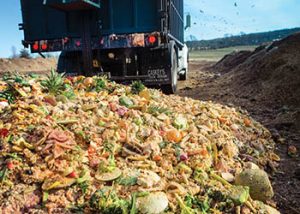 In a classic tale of turning trash into treasure, two different processes soon may be the favored dynamic duo to turn food waste into green energy, according to a new study led by Cornell University in Ithaca, New York.
In a classic tale of turning trash into treasure, two different processes soon may be the favored dynamic duo to turn food waste into green energy, according to a new study led by Cornell University in Ithaca, New York.
“Food waste should have a high value. We’re treating it as a resource, and we’re making marketable products out of it,” said lead author Roy Posmanik, a postdoctoral researcher. “Food waste is still carbon — a lot of carbon.”
The researchers show that by using hydrothermal liquefaction before anaerobic digestion, virtually all of the energy is extracted from the food waste. In hydrothermal liquefaction, the waste is basically pressure cooked to produce a crude bio-oil. That oil can be refined into biofuel.
The remaining food waste, which is in an aqueous state, is anaerobically digested by microbes within days. The microbes convert the waste into methane, which can be used to produce commercial amounts of electricity and heat.
Food waste is the single largest component going into municipal landfills in the United States, according to the U.S. Department of Agriculture. About one-third of the world’s food — nearly 1.3 billion tons — is lost or wasted, according to the United Nations.



